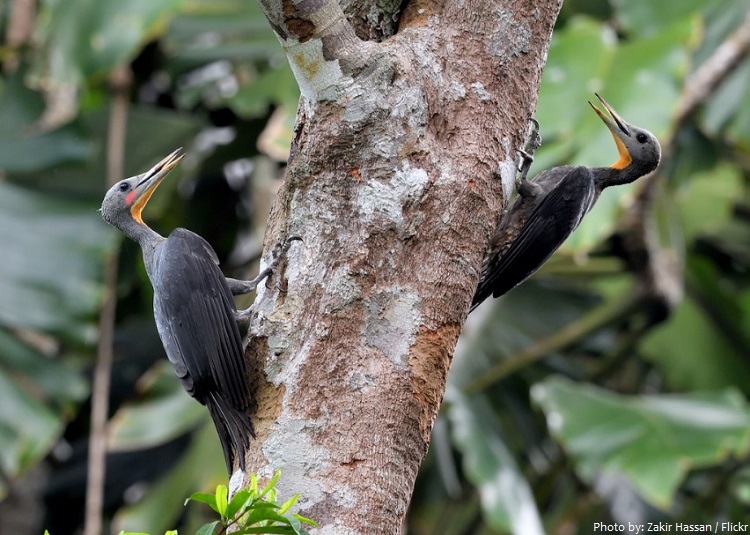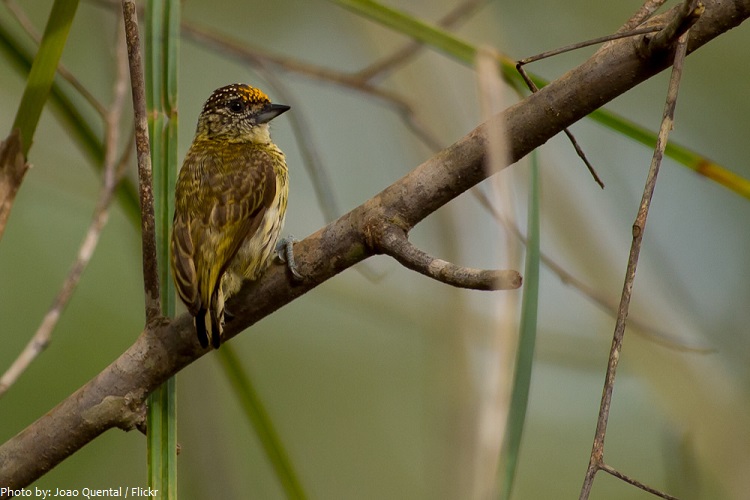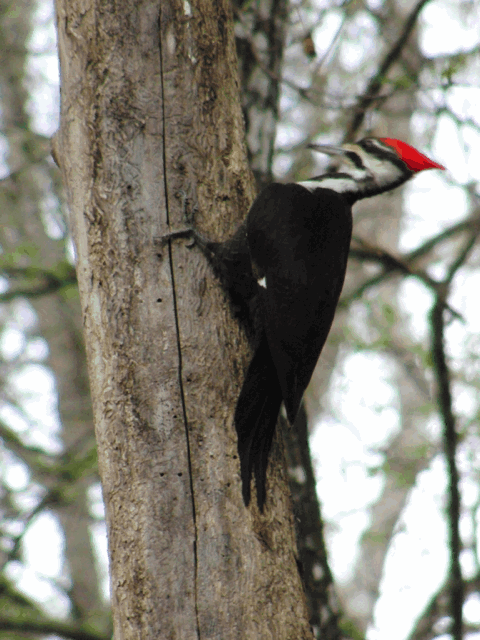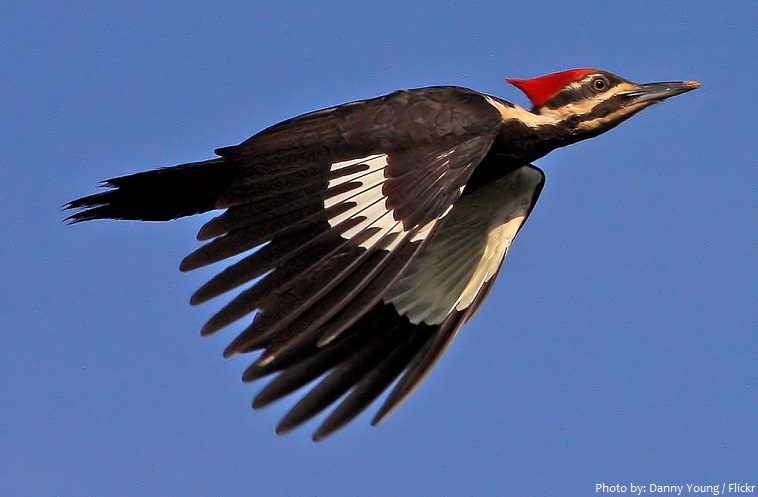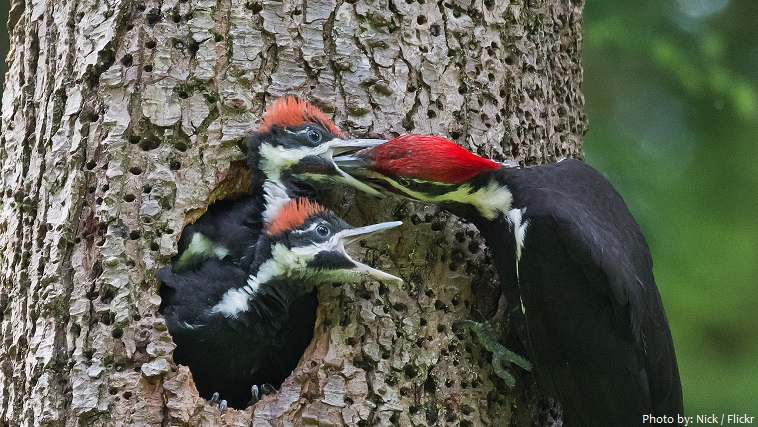Woodpeckers are colorful and beautiful birds, well-known for pecking the wood of trees with their pointed beaks.
There are about 200 different species of woodpeckers worldwide.
They live in every place in the world except Australia, New Guinea, New Zealand, Madagascar, and the extreme polar regions.
Most species live in forests or woodland habitats, although a few species are known to live in treeless areas, such as rocky hillsides and deserts.
The average lifespan is from 4 to 12 years in the wild, depending on the species.
The two largest woodpeckers in the world are the imperial woodpecker and the ivory-billed woodpecker, but both may be extinct. The largest confirmed woodpecker is the great slaty woodpecker (Mulleripicus pulverulentus) [photo below] at 48–58 centimeters (19–23 inches) long and a weight of 360–563 grams (0.794–1.241 lb).
The smallest species of woodpecker is the bar-breasted piculet (Picumnus aurifrons) at 7.5 centimeters (3.0 inches) in length and will weigh 8 to 10 grams (0.28 to 0.35 oz).
The most common plumage colors for all woodpeckers are black, white, red and yellow. A few species also have orange, green, brown, maroon and gold in their coloration. Brighter colors are usually flashy patches, typically on the head, neck or back where they will be easily seen.
Woodpeckers have strong bills for drilling and drumming on trees and long sticky tongues for extracting food.
The tongue of a woodpecker is up to 10 centimeters (4 inches) long and three times the length of its bill. Many woodpeckers have barbed tongues that help them extract bugs from trees and holes. When the long tongue is not in use, the woodpecker wraps it around the back of its head, between the skull and the skin.
The diet of woodpeckers consists mainly of insects and their grubs taken from living and dead trees, and other arthropods, along with fruit, nuts and sap from live trees.
Woodpeckers are diurnal, roosting at night inside holes. In most species the roost will become the nest during the breeding season.
The woodpeckers range from highly antisocial solitary species that are aggressive toward other members of their species, to species that live in groups.
Compared to other birds, most species of woodpeckers have a distinct flight pattern. It’s made up of several rapid wing beats which is then followed by a quick glide when the woodpecker’s wings are tucked against their body rather than spreading it out.
While most birds have one toe pointing back and three pointing forward on each foot, woodpeckers have two sharply clawed toes pointing in each direction to help them grasp the sides of trees and balance while they hammer – this formation is called zygodactal feet.
Strong, dense muscles in the bird’s neck give it strength to repeatedly thump its head. But it is extra muscles in the skull that keep the bird from getting hurt. These muscles act like a protective helmet for the brain.
Unlike the human brain , the woodpecker’s brain is tightly confined by muscles in the skull and a compressible bone. This keeps the woodpecker brain from jiggling around when the bird is stabbing away at a tree trunk.
Woodpecker is able to peck 20 times per second. It produces between 10,000 and 12,000 pecks per day.
Woodpeckers peck into trees in search of food or to create a nesting site. They also “drum,” or peck in a rapid rhythmic succession to establish their territory and attract mates. Drumming usually occurs in the spring on metal or wood resonant surfaces. It may occur a number of times during a single day, and last for days or months.
Woodpeckers make a wide variety of noises but do not sing. They can make chirps, chatters and other alarm calls. Drumming is the woodpecker equivalent of singing.
Most woodpeckers live year-round in the same area. They are very persistent and not easily driven from their established territory.
Woodpeckers are monogamous. Both male and female prepare nest in the tree. Female lays between 2 and 5 eggs. Incubation period lasts 11 to 14 days. It takes about 18–30 days before the young are ready to leave the nest.
The main predators of the woodpecker include wild cats, foxes, coyotes, snakes and large birds although many other species of animal will prey on the woodpecker too.
Many species of woodpeckers are threatened or endangered due to loss of habitat or habitat fragmentation.
Woody Woodpecker is an anthropomorphic animated woodpecker, inspired by the acorn woodpecker and also resembling the pileated woodpecker, who appeared in theatrical short films produced by the Walter Lantz animation studio and distributed by Universal Pictures.

